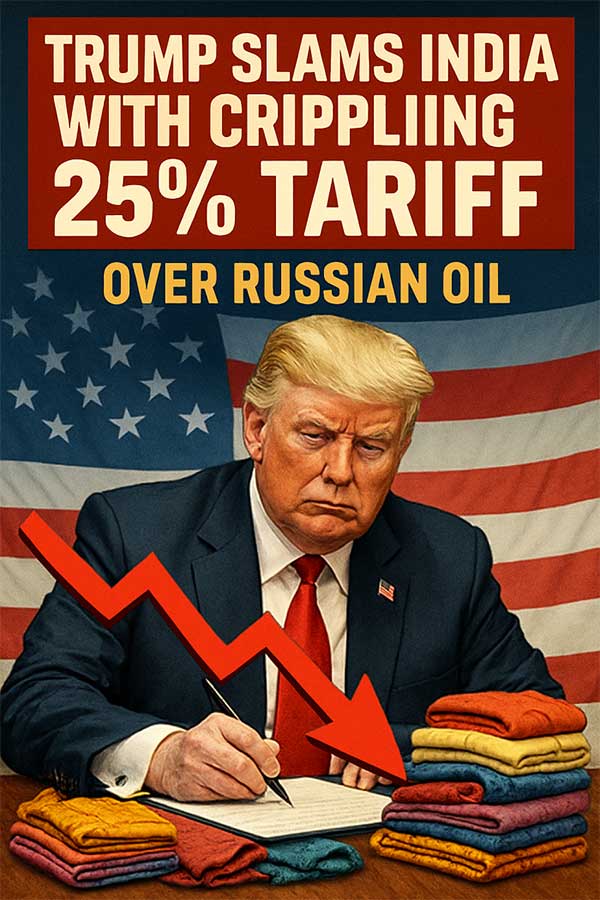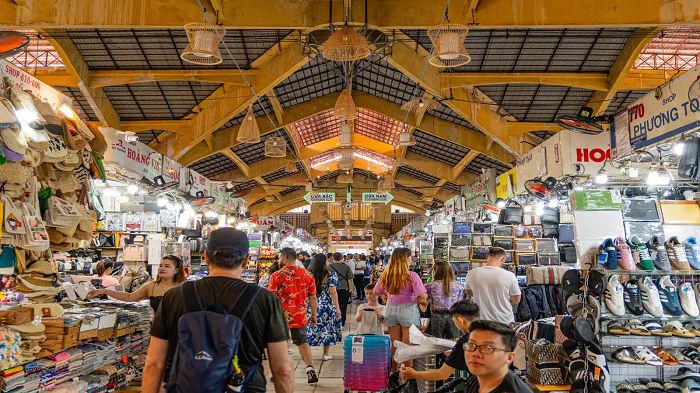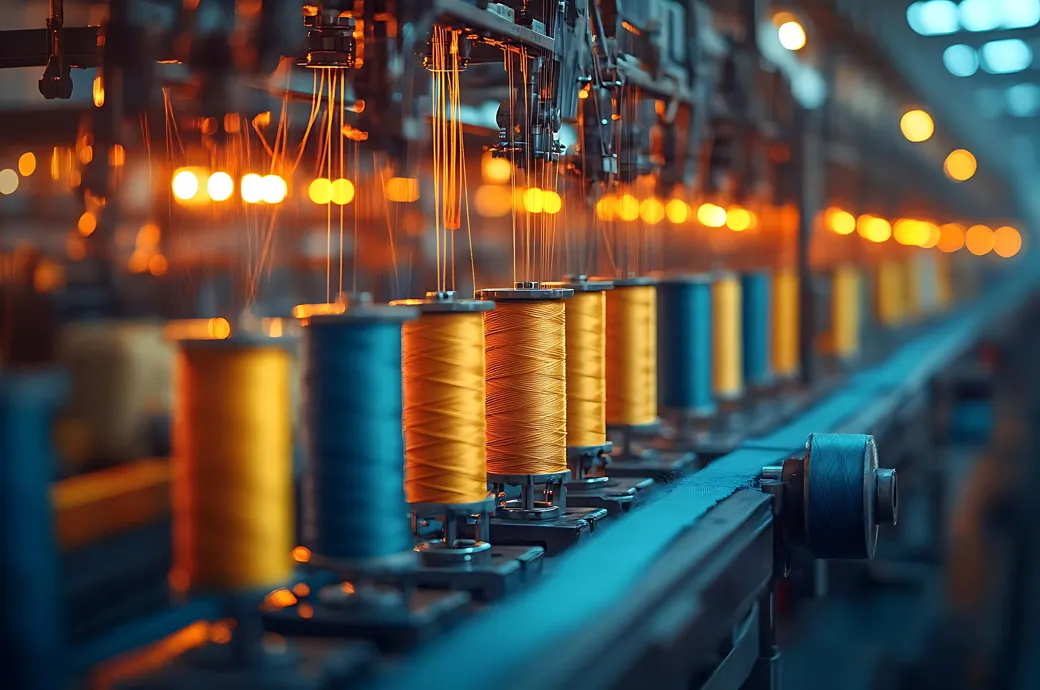Rajasthan's garment manufacturers are urging the industries department to recognize their sector under the one-district-one-product (ODOP) initiative, seeking benefits similar to those provided by Uttar Pradesh (UP) and other states.
Currently, the department has included the gem and jewelry sector in ODOP, though the benefits are pending announcement. The ODOP's goal is to boost district-wise exports of at least one product.
Highlighting the upcoming global textile expo organized by the Union textile ministry in Delhi, the Garment Exporters Association of Rajasthan (GEAR) has emphasized the advantages UP offers its manufacturers.
Under the ODOP scheme, UP refunds up to 75% or Rs 50,000 (whichever is higher) for state exhibitors' stall charges at fairs and exhibitions within the state. Additionally, it provides Rs 1.5-2 lakh for participation in national and international events, along with reimbursing 75% of transport and travel expenses for exhibitors.
Fair Association, highlighted the significance of the global textile expo, offering Rajasthan's textile and garment industry a platform to showcase products and learn about industry trends. Despite multiple discussions with the industries department, concrete actions have yet to be taken.
Syria is set to revive its economic landscape with the return of the Motex – Khan el Harir show, a once-prominent trade fair until 2014.
Hosted at the Damascus Exhibition Park from January 1 to 14, the event, organized by the Damascus Chamber of Commerce, in collaboration with industry chambers and associations, focuses on textiles.
With a rich history, Motex has been a key player in enhancing Syria's textile sector competitiveness.
The show's significance extends beyond borders, attracting importers from Arab nations like Algeria, Libya, and Egypt.
Aiming to rejuvenate economic ties, Motex promises to be a pivotal event in the region.
Vietnam’s textile and garment exports to the EU are expected to decline by over 9 per cent to $40 billion this year.
Becoming the biggest importer from the country, the US imported textile and garment products worth $11 billion from Vietnam by September-end, show figures from the Vietnam Textile and Apparel Association(VITAS). The country’s achievement was followed by that of Japan, the EU, the Republic of Korea, Canada, and China.
However, in 2023, the Vietnam textile and garment industry faces significant challenges, adds the association. These include the lingering global impact of the COVID-19 pandemic and an accumulation of a large inventory due to a decline in demand, it affirms.
To counter these, the industry needs to focus on diversifying markets, products, customers and partners, VITAS notes.
In recent times, Vietnam gained a significant position in the global textile and apparel market by expanding its export base. Last year its textile and garments exports to the global market surpassed $44 billion.
The central government plans to set up seven Pradhan Mantri Mega Integrated Textile Region and Apparel (PM MITRA) parks across the country and is setting up special purpose vehicles for the same.
As per reports, these parks will be set up at Virudhunagar in Tamil Nadu, Warangal inTelangana, Navsari in Gujarat, Kalaburagi in Karnataka, Dhar in Madhya Pradesh, Lucknow in Uttar Pradesh, and Amravati in Maharashtra. The government has already incorporated SPVs in Gujarat and Uttar Pradesh for the project and is further setting SPVs in Madhya Pradesh, Tamil Nadu, Telangana, Maharashtra, and Karnataka.
The project will be implemented by the Ministry of Textiles. Around 49 per cent of the project cost will be covered by the central government with the respective state governments investing the remaining 51 per cent.
Each of the Greenfield parks will be set up with an investment of Rs 800 crore while brownfield parks will be set up at an investment of Rs 500 crore. Land and utility infrastructure for the project will be provided by each of the state government. The PM MITRA parks will help create a world-class infrastructure for the textile sector.
Italy’s silk yarn imports increased by 54 per cent to $16 million in September 2023, As per IndexBox estimates, the volume of these imports surged by 47 per cent to 192 tons million during the month. From September 2022-2023, Italy’s silk yarn imports rose by 1.8 per cent in value.
In September 2023, Italy’s silk yarn imports from Romania totaled 125 tons and constituted 65 per cent of its total imports. From September 2022 to September 2023, imports from Romania grew by 3.3 per cent on a monthly basis while imports from China reported a negative growth of -4.2 per cent and from Vietnam imports by -2.3 per cent M-o-M.
Italy’s silk yarn imports from Romania grew to $11 million in September 2023. It comprised 69 per cent of the country’s total imports. Imports from China totaled $3.3 million and constituted 21 per cent share of total imports.
From September 2022 to September 2023, the value of Italy’s silk yarn imports from Romania grew to 4.7 per cent on a monthly basis, Imports from China grew by -3.8 per cent M-o-M while that from Vietnam grew by -2.4 per cent M-o-M.
Unfavorable weather conditions in the major producing regions led to China's annual cotton production declining by 6.1 per cent to 5.618 million tonne in 2023, shows data from the National Bureau of Statistics (NBS).
China’s total area under cotton cultivation declined by 7.1 per cent during the year to 2.7881 million hectare. Meanwhile, the national average output per hectare increased by 1.1 percent.
Wang Guirong, Official, NBS, says, unsatisfactory weather conditions such as lower temperatures and more rainfall in spring alongwith long-lasting heatweaves were the main reasons behind the decline in per hectare cotton production in China.
However, production in the Yangtze River basin increased per hectare due to a low foundation caused by persistent high temperatures and droughts last year.
The total area under cotton cultivation along the Yellow River also increased per hectare output due to improved management, adds Wang.
The AW23 collection of London-based fashion brand Wax London launched with a new campaign titled ‘Driving Home for Christmas,’ Focusing on winter wear garments, the collection is characterised by a rich color palette and introduces 100 designs in winter shades of browns, greens, blues, and burgundy.
A few of the collection’s signature pieces include the Wax Whiting Overshirt, the sell-out Chester Coat, the Navarino trench coat, and three new coat silhouettes in various colors. The collection also offers a variety of waist-length jackets, including the new Otto Overshirt and the return of the Iggy Jacket in Jacquard and Wool for colder days.
The outerwear promotes layering in signature pieces like the Whiting Overshirts, Greenland jacket, Sasso car coat, Santoni Coat, Chester Coat, and the reissued Navarino Mac coat.
The "Driving Home for Christmas" campaign for this collection depicts the adventures of three best friends exploring the city of London day and night. According to the brand, the campaign captures the ethos of London.
Inspired by autumnal weekend getaways away from the city, the Wax London AW23 collection offers stylish, sustainable, and versatile garments. It blends classic silhouettes with new fabrics to create a comfortable and luxurious collection for the winter.
For the first time ever, Bangladesh’s knitwear garment exports to the EU overtook China’s during the January-September 2023 period. The surge was observed both in terms of value and volume of exports.
Figures from Eurostat show, Bangladesh’s knitwear garment exports to the EU surged to $9 billion during the nine-month period as against $8.96 billion exports by China.
Bangladesh achieved this feat by exporting higher value-added garment items, particularly activewear, says Faruque Hassan, President, BGMEA.
However, on a Y-o-Y basis, Bangladesh’s knitwear exports to the EU declined by 20.94 per cent as demand slackened and inflation rates in the EU rose
Knitwear sector in the EU experienced a 17.71 per cent decline in imports amounting to €31.94 billion during the January-September period compared to the previous year, Eurostat data shows.
Sluggish demand for apparel products led to a 17.66 per cent Y-o-Y decline in apparel imports by the region, totaling €13.69 billion.
The industry should focus on non-cotton-based athleisure items for exports in future, advises Hassan. It should also remain committed to responsible and sustainable manufacturing, setting a global example, he adds.
Fazlee Shamim Ehsan, Vice President, BKMEA, attributes Bangladesh's rise a leading exporter to China's shift away from low-end products and Bangladesh's successful establishment of strong backward linkages.
The country continues to outperform its competitors, despite a 23.33 per cent Y-o-Y decline to $5.78 billion in apparel exports to the United States, adds Hassan.
He attributes the recent slowdown to a gloomy global economic outlook, predicting a challenging year for the apparel trade in 2023.
PDS Ltd’s subsidiary, Norlanka Manufacturing, aims to consolidate its position in the kidswear market by acquiring a 26 per cent stake in Sri Lanka-based children's wear manufacturer Nobleswear Pvt Ltd. The business also aims to expand its production facilities.
Besides subscribing to the company’s shares, Norlanka’s investment in Nobleswear involves making an initial investment in the company. Norlanka also aims to acquire an additional 24 per cent stake in Nobleswear at the same valuation.
Sanjay Jain, CEO, PDS Ltd says, the company aims to explore multiple sourcing opportunities by optimising this newly acquired manufacturing asset. It also aims to expand its sourcing business to over Rs 10,000 crore on the basis of its Rs 700 crore manufacturing operations. This will help enhance the company’s efficiency besides driving sustained growth.
Nobleswear’s bottom line profit of around 8 per cent helped boost its top line revenues to Rs 138 crore in FY’2023. The business’ top-line more than doubled over the past three years.
Bangladesh’s RMG exports to traditional markets such as the US, EU and Germany declined in the first five months of FY’23.
Data from the Export Promotion Bureau's (EPB) compiled by the Bangladesh Garment Manufacturers and Exporters Association (BGMEA) indicates, Bangladesh’s apparel exports to traditional markets from July-November’24 increased marginally by 2.75 per cent to $18.83 billion from $18.33 billion in the same period of FY23.
Bangladesh RMG exports to the United States during his period declined by 5.76 per cent to $3.27 billion, compared to $3.47 billion of the same period in FY23.
Exports to Germany declined by 15.10 per cent to $2.30 billion from $2.71 billion recorded in July-November period of FY23.
In the July-October period of FY24, Bangladesh’s apparel exports to the UK recorded a moderate Y-o-Y growth of 14.61 per cent or $2.25 billion from last year’s $1.96 billion. EPB data stated.
Apparel exports to the overall EU market, during the July-November period of FY24, declined by 0.18 per cent to $9.05 billion, down from $9.07 billion in the same period of last fiscal.
Japan, Australia, Russia, India, China, South Korea, UAE, Malaysia, Brazil, Mexico and some other countries are non-traditional export markets for Bangladesh.
Bangladesh’s apparel exports to these non-traditional markets grew by 14.12 per cent Y-o-Y to $3.64 billion from $3.19 billion in the last FY.
Mohiuddin Rubel, Director, BGMEA, says, Bangladesh’s exports to non-traditional markets, especially Australia and Japan, are growing and providing support given the current situation.
Manufacturers are focusing on these markets to offer diversified products that help maintain consistency despite the current global situation.
- 1
- 2
- 3
- 4
- 5
- 6
- 7
- 8
- 9
- 10
Waste Not, Want Not: How Britain’s textile recycling hub will reshape its econom…
The United Kingdom is all set to rewrite the future of fashion waste. In a bold, future-facing move the country... Read more
Elite consumers power luxury market amid global slowdown, highlights BCG Report
As the global luxury industry confronts its first major slowdown in over a decade, a quiet but powerful transformation is... Read more
Trump's Tariff Shock: Indian apparel industry faces exodus as US buyers demand r…
In a dramatic reversal of fortune, India's apparel industry, once poised for growth amid a changing global trade landscape, now... Read more
From Texas to Dhaka, cotton’s route rewritten by trade and tension
In the sprawling fields of West Texas and the ginning factories of Gujarat, tremors of geopolitical unrest are being felt... Read more
Trump slams India with crippling 25% tariff over Russian oil, Indian textile ind…
In a dramatic escalation of global trade tensions, U.S. President Donald J. Trump today signed an Executive Order imposing an... Read more
Circularity in fashion hits a plateau, reveals Kearney's 2025 index
A new report from global management consulting firm Kearney suggests that while circular fashion has become a mainstream ambition, the... Read more
From Seoul to São Paulo: How Gen Z is driving a genderless fashion future
From the minimalist ateliers of Copenhagen to the neon-lit youth districts of Tokyo, unisex fashion is no longer a fringe... Read more
Time to Lead, Not Follow: Textile industry must become a national priority, says…
In a visionary address at the Textile Leaders’ Conclave 2025 in Ahmedabad, Kulin Lalbhai, Vice Chairman of Arvind Ltd., called... Read more
Fashion flows shift, Vietnam and UK drive growth as others stall
The global apparel trade and retail sector continues to evolve, balancing between post-pandemic recovery, macroeconomic uncertainties, and changing consumer behavior.... Read more
Inflation, wages, and green mandates, what’s unravelling Türkiye’s textile domin…
Once celebrated as a textile stronghold bridging East and West, Türkiye’s garment and textile sector now faces numerous crises. From... Read more












